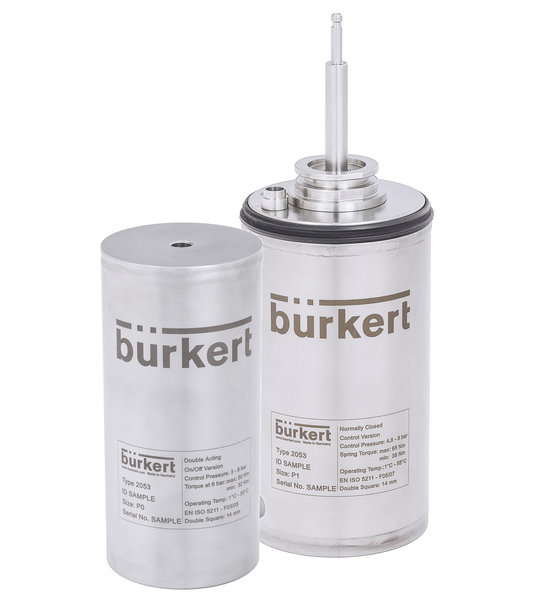www.foodpackautomation.com
18
'21
Written on Modified on
Bürkert Fluid Control Systems
Lean rotary actuators in hygienic design
Bürkert Fluid Control Systems has developed a particularly lean actuator series (Type 2053) to automatically operate ball valves and butterfly valves, even in space-critical applications. The rotary actuators in stainless steel housings are suitable for the ELEMENT control heads, positioners and process controllers and enable intelligent decentralised automation.

The new compact pneumatic rotary actuators Type 2053 with ELEMENT interface from Bürkert Fluid Control Systems make it particularly easy to connect suitable control heads, positioners and process controllers and create an intelligent, ‘consistent’ component for decentralised automation concepts. Special emphasis has been placed on the hygienic design. An internal pilot air duct underneath the robust stainless steel housing also prevents disruptive hoses and provides protection against leaks.
The high and lean design makes installation easier where space is limited and facilitates cleaning, as there are no hard-to-access dirt traps such as gaps, corners and edges. The actuators are thus ideal for use in the food and beverage, chemical, pharmaceutical, cosmetics or water treatment industries. Using the standardised ISO 5211 interface, they can be easily combined with common armatures such as ball valves and butterfly valves. Individual interfaces, which can be combined e.g. with hygienic butterfly valves, are available on request.
Reliable mechanics
The actuator is available in three sizes (P0, P1, P2) and can be purchased as a single or double-acting variant. In both rotary actuators, the linear stroke movement of the working piston is converted into a 90° rotary movement of the drive shaft by a curve element. Both versions operate in a temperature range between -10 and 60°C.

